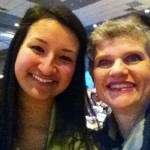 Every day since March 8, the unexplained disappearance of Malaysia Airlines Flight 370 was featured as the top news story on every major network. Experts from every industry and background were called upon for their thoughts, opinions and speculations about what could have happened. Expertise came from the fields of aeronautics, aviation, meteorology, oceanography, geography, security, terrorism. Yet one area of expertise was missing: intercultural communication.
Every day since March 8, the unexplained disappearance of Malaysia Airlines Flight 370 was featured as the top news story on every major network. Experts from every industry and background were called upon for their thoughts, opinions and speculations about what could have happened. Expertise came from the fields of aeronautics, aviation, meteorology, oceanography, geography, security, terrorism. Yet one area of expertise was missing: intercultural communication.
For me, the aha moment came eleven days into the search for the vanished airplane. The media reported that on that day, officials from Thailand brought forward an important piece of information about a signal that had been detected within their air space. When asked why this information had not been shared earlier, Thai officials simply responded, “No one asked us.” The viewing audience must have been shocked to hear this. However, I understood the deeper meaning behind those words. I have travelled to Thailand. It is a beautiful country with beautiful people. As a culture, they do not draw attention to themselves, and they have a high respect for authority. It made sense to me that they would not come forward without being asked first.
Throughout the extensive media coverage, there were no conversations about the challenge of working with 26 different countries who were involved in solving this mystery. Whether actively involved in the search by land or by sea or being within the speculated flight path. the countries involved in this mission have vast cultural differences.
Westerners watched in disbelief as a Chinese man kicked a news videographer’s equipment out of frustration and deep grief after being told that the latest evidence revealed that the plane went down in the vast Indian Ocean, even though there was no solid physical evidence as proof. This action taught a lesson about the differences between high context and low context cultures. Respect is a national value within China. With media descending upon the victims’ families in a photo-taking frenzy within this highly sensitive moment, no respect was shown to the Chinese families. High context and low context culture (also known as the iceberg model) is the work of Edward T. Hall, an American anthropologist who created the field of intercultural communication. China is a high context culture, where communication is less verbally explicit. This means that shoving a microphone in someone’s face, seeking a reaction to the loss of a loved one (in a public venue, no less) is an affront to that culture.
Dutch social psychologist Geert Hofstede, the founder of comparative intercultural research, created the cultural dimensions theory that recognized that people differ across cultures in specific dimensions of values. His brilliant scholarly research began when he worked for IBM in the 1960s. His work can be found on the website, www.geert-hofstede.com. He is one of the foremost authorities in intercultural communication alive in the world today. Yet no one called him for an interview.
Amidst the large story of reporting the day-to-day findings of this horrific event, another story angle was completely missed. To me, M370 provides a fascinating case study in intercultural communication and how countries that are culturally diverse can find a way to work together to accomplish one common mission.
Events like this remind us that we are indeed part of a global society. To maneuver our way through this vast, unknown area, we must honor and respect our cultural differences. When we learn from the experience, we must pass on our knowledge so that others can learn.



